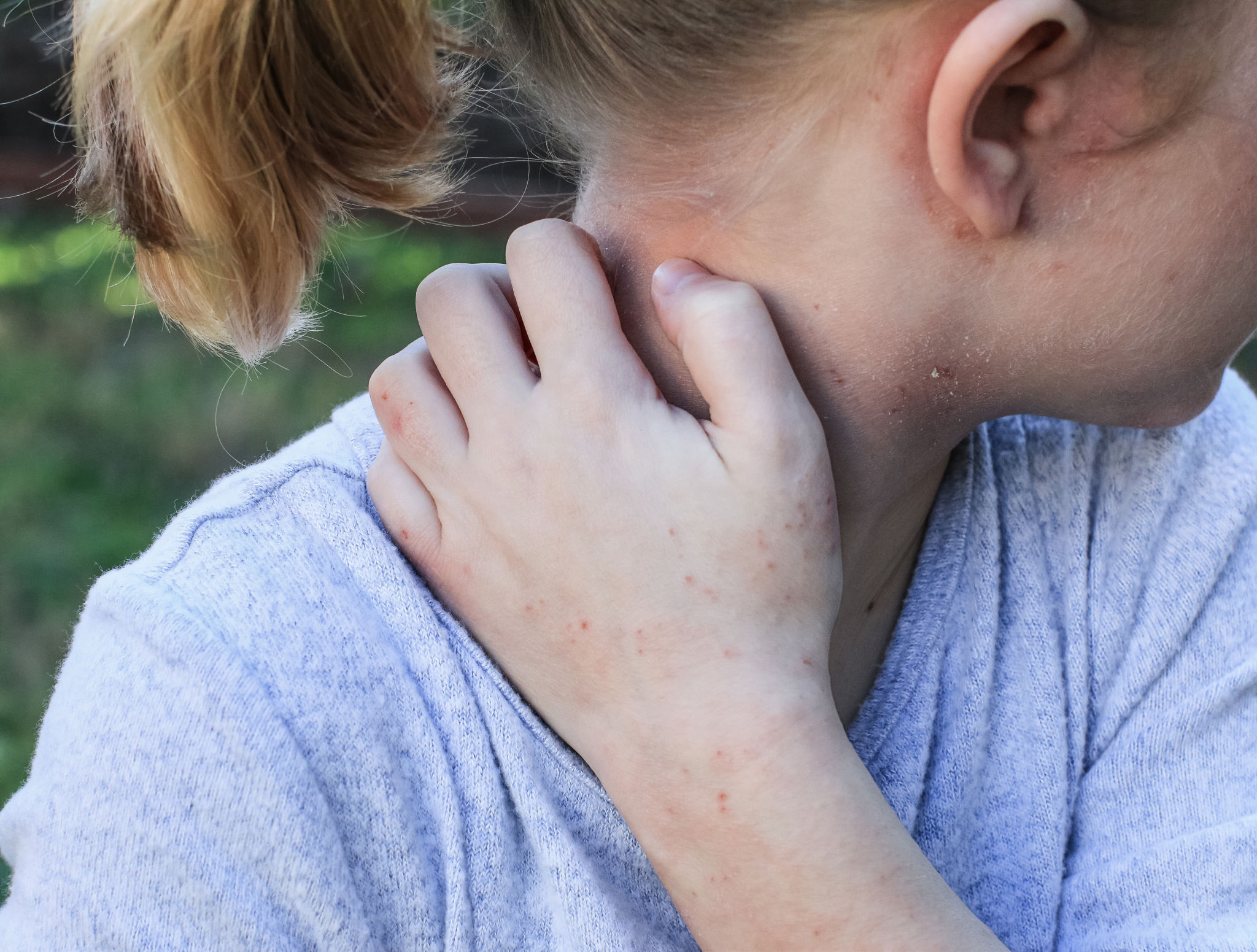What is Atopic Dermatitis or Eczema
Atopic dermatitis, or eczema, is a common inflammatory condition of the skin characterized by intense itching , hence it is commonly referred to as “the itch that rashes.” The condition is associated with atopy, which refers to a predisposition toward developing hypersensitivity reactions such eczema, asthma and allergic rhinitis. In most cases onset of the condition occurs before five years of age.

What are the Sign & Symptoms
Pruritis is typically the most outstanding clinical feature and secondary lesions due to chronic rubbing and scratching are very common. The appearance of lesions can be varied and may present with any of the following:
- xerosis (dry, scaly skin)
- ill-defined erythema
- small coalescing edematous papules or vesicles
- lichenification and/or excoriations (secondary to relentless scratching)
- crusting (if secondarily infected)
What are the causes
Though the specific cause of atopic dermatitis is unknown two major theories exist:
- The leading theory suggests that atopic dermatitis may result from impairment of the skins function as a protective barrier due to intrinsic structural or functional abnormalities of the skin. Thus the disease evolves as an outside-in process.
- The more traditional theory revolves around the idea of immune dysfunction in which immune cells modulate an inflammatory response to environmental factors. More recently, the association of allergies and asthma in the pathogenesis of atopic dermatitis has been called into question.
Treatment
- Avoidance of irritating factors
- Emollients and moisturizers to re-establish the cutaneous permeability barrier
- Follow prescribed drugs.


